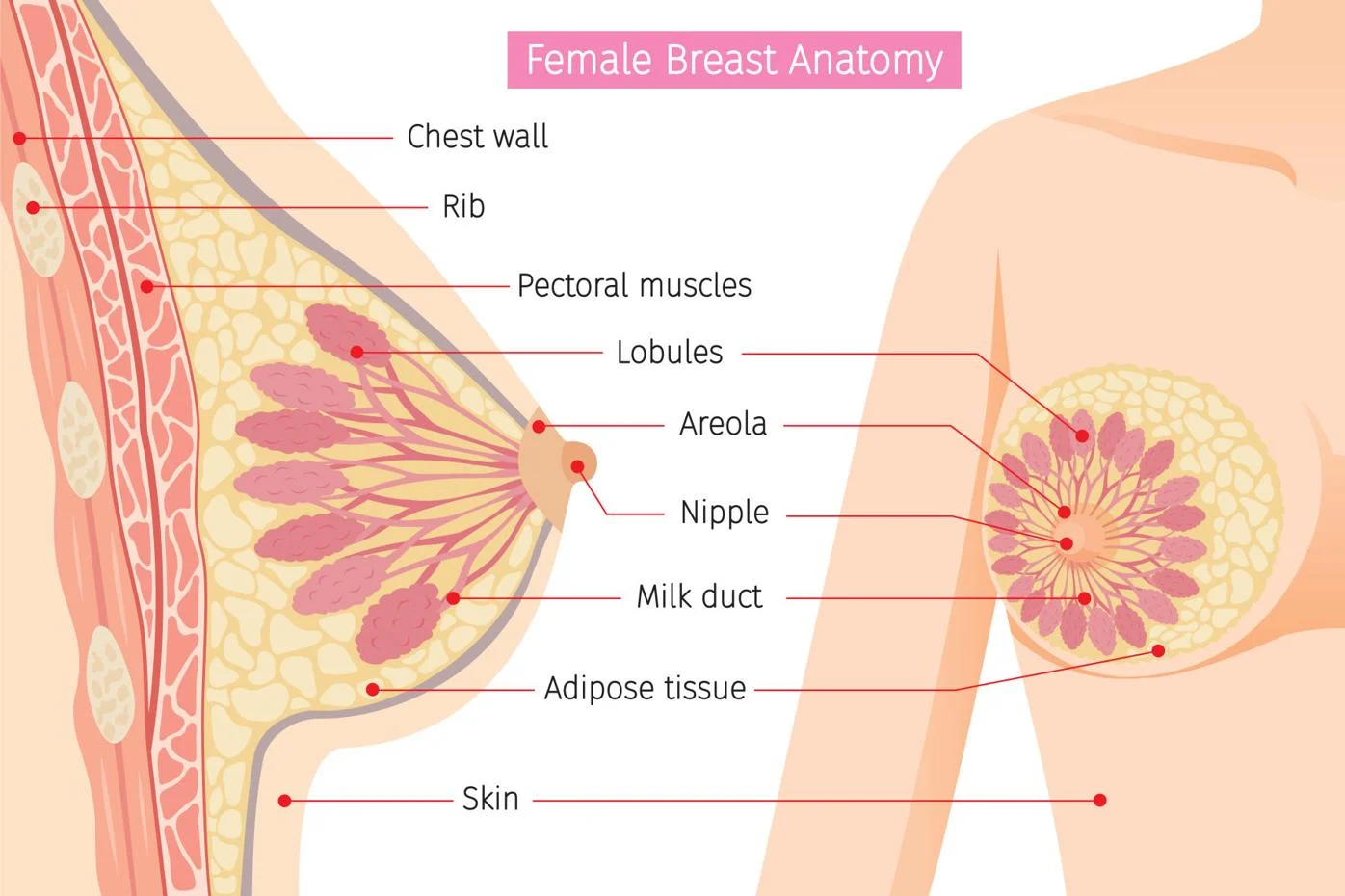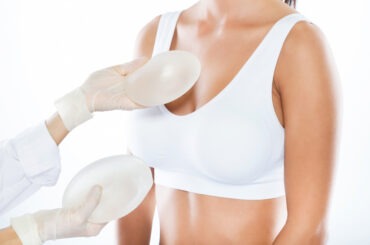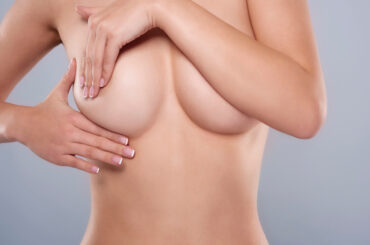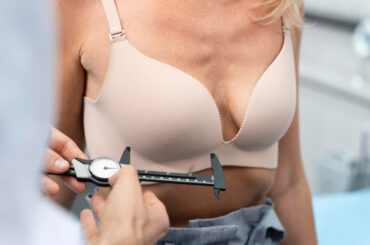Breast anatomy is quite complex: it includes connective tissue, fat deposits, milk ducts, lymph nodes and ligaments, among other parts. As anyone with eyes can clearly see, breasts sit front and center in the upper torso on both the left and right sides. Technically, both men and women have breast tissue; the main difference lies in the fact that men do not have mammary glands.
For the most part, breasts consist of fat cells that have the unique ability to store a higher ratio of fat in them when compared to other types of cells. The fat deposits within the breast are influenced by estrogen levels. This hormone basically encourages the growth of breast tissue; the spike in estrogen as a girl goes through puberty contributes to fat storage within the breast. Hormones like testosterone inhibit the production of breast tissue, which is one of the reasons why men typically do not grow breasts.
How Human Breasts Differ
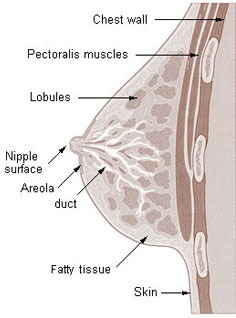 Although similar in most other functions and basic structure, human breasts operate a bit differently from those of other primates. While other primates only experience breast growth when there is a specific need to lactate following birth, humans experience breast growth gradually once they enter puberty. In addition, other species’ breasts diminish in size once they have finished feeding their young, while human breasts stay approximately the same in size. There is some fluctuation in breast size based on hormone levels, especially during pregnancy, as well as when a woman gains or loses a significant amount of weight.
Although similar in most other functions and basic structure, human breasts operate a bit differently from those of other primates. While other primates only experience breast growth when there is a specific need to lactate following birth, humans experience breast growth gradually once they enter puberty. In addition, other species’ breasts diminish in size once they have finished feeding their young, while human breasts stay approximately the same in size. There is some fluctuation in breast size based on hormone levels, especially during pregnancy, as well as when a woman gains or loses a significant amount of weight.
Pregnancy Growth
Over the course of her pregnancy, a woman will find that her breasts are growing, in order to accommodate milk production. Breast growth during pregnancy is not directly related to your pre-pregnancy cup size. If you have a smaller cup size, your breasts will typically grow more at this point in order to accommodate milk production, even though the amount of tissue that produces milk remains unchanged. This is the primary reason why small-breasted women can produce the same amount of breast milk that women with larger breasts generate.
All About Mammary Glands
The mammary glands are comprised of an intricate network of ducts and lobules. Each lobule contains a minuscule sac called the alveolus. Each alveolus is connected to the milk ducts. These ducts transport the milk from the alveoli to the areola, where it passes through bigger milk ducts that end in the nipple. The mammary glands as a whole are responsible for the production and transportation of breast milk.
The Nipple and Areola
The function of the nipples and areolas is predominantly based on stimulation. Basically, the nipples will turn rigid when exposed to cold or as part of the breastfeeding process. Sexual arousal will also elicit the same response.
The darkened region around the nipple is called the areola. The areola darkens and expands during pregnancy. Unbeknownst to many, it is comprised of various diminutive sweat glands that are modified to lubricate the area around the nipple. The milk ducts pass through the areola before terminating in the nipple itself. In addition to helping with breast feeding, the areola is also considered a physical adornment that symbolizes beauty and the essence of femininity in several cultures.
Natural Breast Enlargement
The best breast enlargement products work with the body to stimulate safe, natural breast growth. Herbal breast enhancement supplements and creams mimic estrogen within the body to stimulate the development of breast tissue. Much like going through puberty, these products do not produce significant breast growth overnight; however, they are much safer than breast enhancement surgery. Breast implants can cause complications and negatively affect breast feeding. Check out our product review chart to find the natural breast enhancement product that is right for you.

